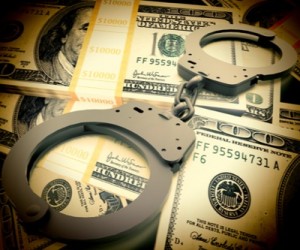
Insider Trading Laws and Innovation
by Ross Levine (Berkeley-Haas), Chen Lin and Lai Wei (CUHK Business School at the Chinese University of Hong Kong)
Link to paper.
Do legal restrictions on insider trading accelerate or slow technological innovation? Theory offers differing answers. Leland (1992) stresses that insider trading quickly reveals their information in public markets, improving stock price informativeness. Thus, restricting insider trading can hinder price discovery and reduce the efficiency of resource allocation among opaque activities such as innovation. Demsetz (1986) argues that for some firms, insider trading is an efficient way to compensate large owners for exerting corporate control. Thus, restricting insider trading can impede effective governance and investment. Other theories, however, highlight mechanisms through which restricting insider trading accelerates innovation. Fishman and Hagerty (1992) and DelMarzo et al. (1998) stress that restricting insider trading reduces the ability of corporate insiders to exploit other investors, which encourages those outside investors to expend resources assessing firms. This improves the valuation of difficult to assess activities, such innovation, and enhances investment.
Existing empirical evidence has not yet resolved these conflicting views. Indeed, researchers have not empirically assessed the overall impact of restricting insider trading on innovation.
In this paper, we offer the first study of whether restrictions on insider trading are associated with an overall increase or decrease in the rate of innovation. To conduct our study, we use the staggered enforcement of insider trading laws across 94 countries over the period from 1976 through 2006. To measure innovation, we construct six patent-based indicators. We obtain information on patenting activities at the industry level in 94 countries from 1976 through 2006 from the EPO Worldwide Patent Statistical Database (PATSTAT). We compile a sample of 76,321 country-industry-year observations and calculate the following proxies for technological innovation: (1) the number of patents to gauge the intensity of patenting activity, (2) the number of forward citations to patents filed in this country-industry-year to measure the impact of innovative activity, (3) the number of patents in a country-industry-year that become “top-ten” patents, i.e., patents that fall into the top 10% of citation distribution of all the patents in the same technology class in a year, to measure high-impact inventions, (4) the number of patenting entities to assess the scope of innovative activities, (5) the degree to which technology classes other than the one of the patent cite the patent to measure the generality of the invention, and (6) the degree to which the patent cites innovations in other technology classes to measure the originality of the invention.
We find that enforcing insider trading laws spurs innovation—as measured by patent intensity, scope, impact, generality, and originality. Consistent with theories that insider trading slows innovation by impeding the valuation of innovative activities, the relation between enforcing insider trading laws and innovation is larger in industries that are naturally innovative and opaque, and equity issuances also rise much more in these industries after a country enforces its insider trading laws.

Topics
Capital flows
Initiatives
Financial Globalization
